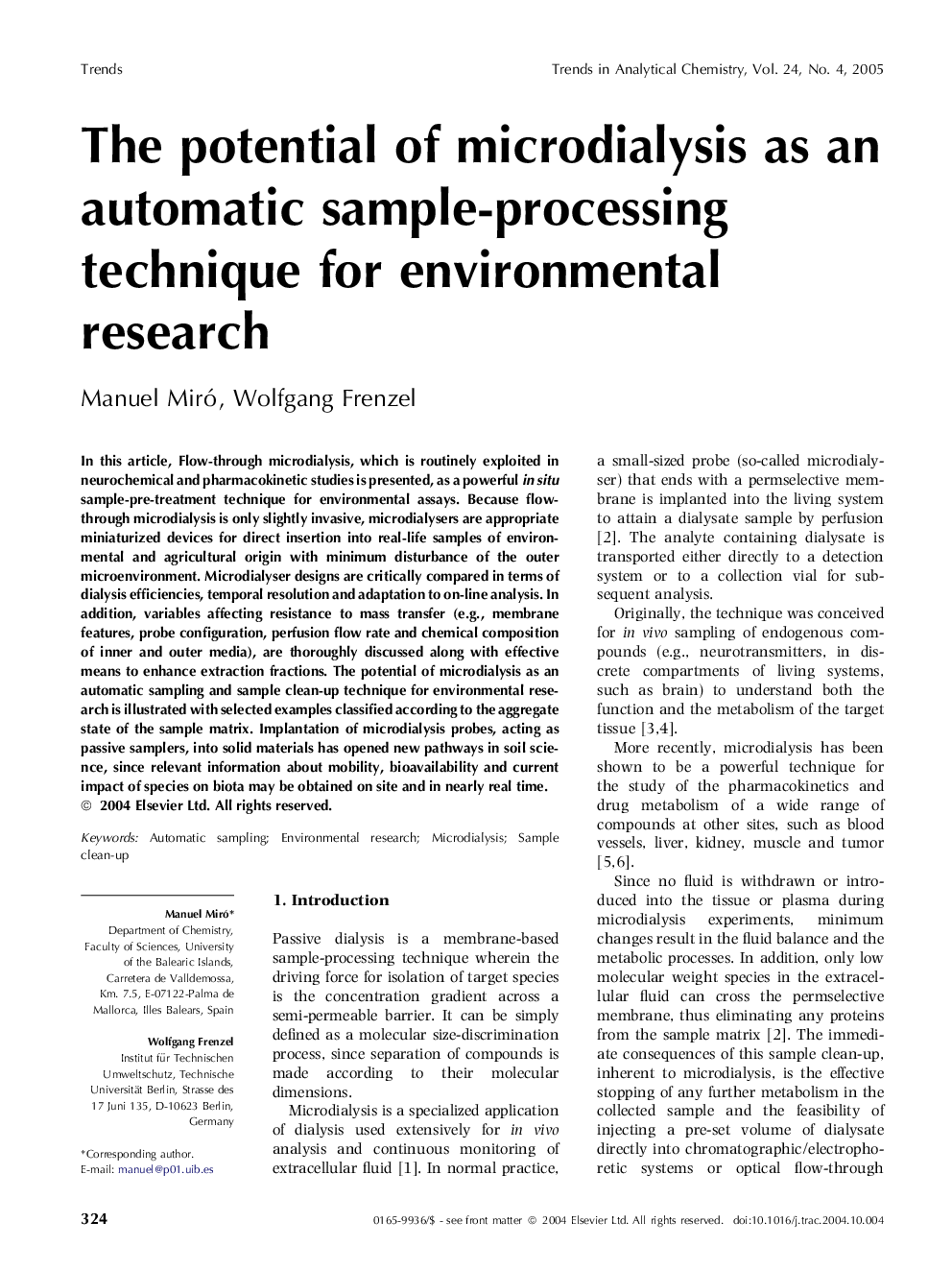| Article ID | Journal | Published Year | Pages | File Type |
|---|---|---|---|---|
| 10564263 | TrAC Trends in Analytical Chemistry | 2005 | 10 Pages |
Abstract
In this article, Flow-through microdialysis, which is routinely exploited in neurochemical and pharmacokinetic studies is presented, as a powerful in situ sample-pre-treatment technique for environmental assays. Because flow-through microdialysis is only slightly invasive, microdialysers are appropriate miniaturized devices for direct insertion into real-life samples of environmental and agricultural origin with minimum disturbance of the outer microenvironment. Microdialyser designs are critically compared in terms of dialysis efficiencies, temporal resolution and adaptation to on-line analysis. In addition, variables affecting resistance to mass transfer (e.g., membrane features, probe configuration, perfusion flow rate and chemical composition of inner and outer media), are thoroughly discussed along with effective means to enhance extraction fractions. The potential of microdialysis as an automatic sampling and sample clean-up technique for environmental research is illustrated with selected examples classified according to the aggregate state of the sample matrix. Implantation of microdialysis probes, acting as passive samplers, into solid materials has opened new pathways in soil science, since relevant information about mobility, bioavailability and current impact of species on biota may be obtained on site and in nearly real time.
Related Topics
Physical Sciences and Engineering
Chemistry
Analytical Chemistry
Authors
Manuel Miró, Wolfgang Frenzel,
